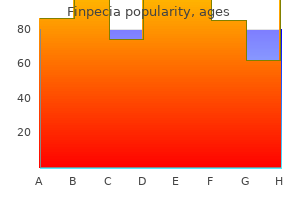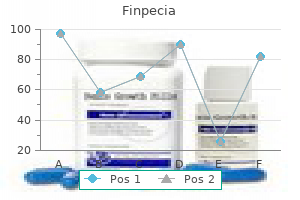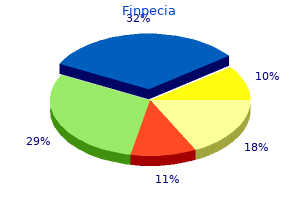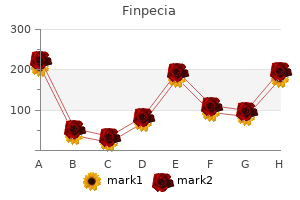


Finpecia
"Order finpecia 1 mg amex, hair loss eyebrows".
U. Redge, M.B. B.CH. B.A.O., M.B.B.Ch., Ph.D.
Clinical Director, University of California, Davis School of Medicine
There is a point of overlap with circumstances that fulfil the criteria for hairy cell leukaemia variant; however hair loss juicing 1 mg finpecia generic visa, extra studies are required to further evaluate the extent of overlap between these enti ties hair loss 5 weeks pregnant finpecia 1 mg cheap free shipping, particularly given that not all research report the same phenotypic hair loss cure latest news finpecia 1 mg order free shipping, cytogenetic, or molecular findings 2584,3481. Although not consist ent amongst all studies, thrombocytopenia and leukopenia are incessantly current, whereas anaemia has been reported more not often. The neoplasm also involves bone marrow sinusoids and peripheral blood, generally with a vil lous cytology 1921,4043,4044. This is a provisional entity that requires additional molecular studies for defining its major options and diagnostic markers. It accounts for about 10% of the Bcell lymphomas diagnosed in sple nectomy specimens. Some of these instances fulfil the standards for nonchronic lymphocytic leukaemia-type monoclonal Bcell lymphocytosis. Bone marrow Intrasinusoidal infiltration is the rule, oc casionally as a sole discovering. Spleen There is a diffuse sample of involvement of the red pulp, with both twine and sinu soid infiltration. The neoplastic infiltrate consists of a monomorphic inhabitants of small to mediumsized lymphocytes, with round and regular nuclei, compact chromatin, and occasional distinct small nucleoli, with scattered nucleolated blast cells. Prognosis and predictive factors the 5year survival fee is reported to be 57% 1647. However, patients appear to achieve a long-lasting response to the mixture of cladribine and rituximab 2106. B the bone marrow biopsy reveals a diffuse, interstitial sample of infiltration similar to that of typical bushy cell leukaemia. Localization the spleen, bone marrow, and peripheral blood are concerned, but lymphadenopathy is comparatively unusual 2584. Leukocyto sis is a constant function, with a median white blood cell rely of about 30 x 109/L. Thrombocytopenia is current in about half of the sufferers and anaemia in one quar ter 1647. Nuclear options range from condensed chromatin with the prominent central nucleoli of a prolymphocytic cell to dis persed chromatin with highly irregular nuclear contours. Cytoplasmic options are equally variable, although a point of bushy projections is often famous. The leukaemic cells fill dilated sinusoids, and red blood cell lakes could additionally be noted 2584. Liver in volvement is characterized by each portal tract and sinusoidal infiltrates. Some of the hepatitis C virus-associated lymphoplasmacytic pro liferations, even when monotypic, are non-pro gressive and may be similar to monoclonal B-cell lymphocytosis 2690,2717. Treat ment of those sufferers with antiviral agents could result in regression of the lympho plasmacytic proliferations 2589,3913. So-called immune-stimulating situations, similar to autoimmune problems, are asso ciated with an increased danger 2483. Localization Most cases contain the bone marrow, and some instances involve the lymph nodes and different extranodal websites. Clinical options Most sufferers current with weak spot and fatigue, normally associated to anaemia. Neu ropathies occur in a minority of patients and should result from reactivity of the IgM paraprotein with myelin sheath antigens, 232 Mature B-cell neoplasms cryoglobulinaemia, or paraprotein depo sition. Deposits of IgM might happen in the pores and skin or the gastrointestinal tract, where they could cause diarrhoea. Coagulopa thies may be brought on by IgM binding to clotting factors, platelets, and fibrin. Microscopy is usually composed predominantly of small lymphocytes admixed with variable numbers of plasma cells, plasmacytoid lymphocytes, and sometimes increased mast cells 2347,3016,3017. The plasma cells may kind distinct clusters separate from the lymphoid component 2347, 2736. Residual disease after remedy may show just about all plasma cells 2347,4157. A related spectrum of cells as are current in the bone marrow could additionally be present in the peripheral blood, however the white blood cell rely is typi cally decrease than in chronic lymphocytic leukaemia. Lymph nodes and different tissues Bone marrow and peripheral blood Bone marrow involvement is character ized by a nodular, diffuse, and/or in terstitial infiltrate, generally even with paratrabecular aggregates. There is a rela tively monotonous proliferation of small lymphocytes, plasma cells, and plasma cytoid lymphocytes, with comparatively few reworked cells. Other instances show larger architectural destruction and may have a vaguely follicular growth pattern, extra prominent residual ger minal centres (even with follicular colo nization), epithelioid histiocyte clusters, sometimes a a lot larger proportion of plasma cells, and sometimes a paucity of frank plasma cells 3521,3851. There could additionally be associated amyloid, other immunoglobulin deposi tion, or crystalstoring histiocytes. Immunophenotype Most cells categorical floor immunoglob ulin, and the light chainrestricted plas macytic cells specific cytoplasmic immu noglobulin (usually IgM, sometimes IgG, and rarely IgA). In addition to the neoplastic plasma cells, polytypic plasma cells can also be current. Small copynumber abnormalities lead ing to diversified Bcell regulatory gene loss es are also commonly found 1735. Clonal cytotoxic Tcell populations may be present, a minimal of within the peripheral blood 2299. These patients are diag nosed at a youthful age and with larger bone marrow involvement. Prognosis and predictive factors the scientific course is typically indolent, with median survival times of 510 years, and with improved survival in more re cent years 579,991,4195. Advanced affected person age, peripheral blood cytopenias (especially anaemia), poor performance status, and high beta2 microglobulin levels have been reported to be associ ated with a worse prognosis 991,4195. Transformation to diffuse large 13cell lymphoma occurs in a small propor tion of instances and is associated with poor survival 2346. Lymphoplasmacytic lymphoma 235 IgM monoclonal gammopathy of undetermined significance Cook J. The price of progression in sufferers with symptomatic IgMrelated disorders appears similar to that in pa tients with out monoclonal proteinrelated signs 2751. Patients stay at risk for progression even after having secure illness for 20 years 2177. In one examine, the chance of progression doubled for every increase of seven g/L in serum monoclonal protein 239. Localization There may be as much as 10% bone marrow infiltration by an lgM+ clonal lym phoplasmacytic population. Reduced polyclonal immunoglobulins are reported in 35% of circumstances, and Bence Jones proteinuria has been reported in roughly 20% 2162,2751. The mar row accommodates clonal lymphoplasmacytic cells; however, they must not represent an infiltrate of 10%. The heavy chain is usually truncated, stopping normal assembly with mild chains. Variably sized proteins are produced, which may not yield a attribute monoclonal peak by rou tine serum protein electrophoresis, and require immunoelectrophoresis or immunofixation to detect. The bone mar row accommodates an infiltrate of attribute vacuolated plasma cells, admixed with small, round lymphocytes. Localization the spleen, liver, bone marrow, and pe ripheral blood may be involved; periph eral lymphadenopathy is usually absent. Heavy chain ailments 237 Epidemiology this could be a rare disease of adults, with a median patient age of 60 years; approxi mately a hundred and fifty instances have been described. Localization the tumour might contain the lymph nodes, Waldeyer ring, gastrointestinal tract and different extranodal websites, bone marrow, liver, spleen, and peripheral blood. Prognosis and predictive elements the scientific course is slowly progressive generally 242,1244,4229,4230. Clinical options Most sufferers have systemic signs similar to anorexia, weak point, fever, weight loss, and recurrent bacterial infections. Autoimmune manifestations are report ed in 2570% of cases, most frequently rheumatoid arthritis and systemic lupus erythematosus, but also autoimmune haemolytic anaemia, thrombocytopenia, or both; vasculitis; Sjgren syndrome; myasthenia gravis; and thyroiditis 371, 1739,4231. Most sufferers have gener alized illness, together with lymphadenopa thy, splenomegaly, and hepatomegaly. Involvement of the Waldeyer ring, skin and subcutaneous tissues, thyroid, sali vary glands, or gastrointestinal tract may happen.


Session 1 started with a dialogue of the character of hysteria and its improvement hair loss in men whom men proven 1 mg finpecia, with the purpose to enhance motivation within the mother and father for intervention hair loss 7 keto finpecia 1 mg buy mastercard. Session 2 covered fundamental rules of mother or father administration techniques and particularly the significance of overprotection in maintaining nervousness hair loss cure xanthoma effective 1 mg finpecia. Finally, in session 6, continued application was mentioned, along with the significance of highrisk intervals, such because the commencement of school. Parents have been also inspired to start to apply cognitive methods to their child as he or she matured. In contrast, in the intervention group there was a considerably larger decrease in nervousness issues than in the monitor group. At oneyear followup, 50% of the intervention group nonetheless met criteria for an nervousness dysfunction, whereas 63. The impact of the intervention appeared to be significantly robust for social anxiety disorder. A additional followup was performed three years after the intervention, when kids were aged roughly seven years. The benefits of the intervention by way of anxiety diagnoses were much more evident at this stage, with 40% of the intervention group still assembly criteria for an anxiousness dysfunction in comparison with 69% of the monitor group (Rapee, Kennedy, Ingram, Edwards, & Sweeney, 2010). Furthermore, participants had been selected for the second trial only if at least one of their parents met standards for an anxiousness dysfunction. In fact, all individuals met criteria for an anxiousness disorder at initial assessment. In whole, seventy one children participated, 35 of whom had been allotted to an intervention group and 36 to a six month waitlist group. At sixmonth followup, youngsters whose parents had accomplished the intervention showed a significant discount in the frequency and severity of tension disorders relative to youngsters 514 Helen F. Furthermore, kids within the intervention group confirmed significantly greater reductions in inhibited temperament, as noticed within the laboratory in addition to by parent report. There are a number of possible explanations for the difference in findings across these two trials. Second, the intervention was barely more intensive because it included eight rather than six sessions. However, these additional classes targeted on mother or father anxiety particularly, and no variations between the intervention and waitlist groups were present in relation to change in parent anxiety. Finally, the followup period was shorter in the second trial; thus it remains potential that these adjustments in temperament could not have been maintained at oneyear postintervention (Kennedy et al. A current followup of the sample from the first trial has provided some support for this (Rapee, 2013). Of the original sample, 71% have been assessed eleven years after the intervention, when the kids were aged roughly 15 years. For girls, there was a major distinction between the intervention and monitor teams on number of internalizing disorders. For anxiety issues, 61% of women in the monitor group met criteria for an nervousness dysfunction in contrast with 39% in the intervention group. For melancholy, 16% of girls in the monitor condition met criteria for depression in comparison with not certainly one of the ladies in the intervention condition. There had been no important variations between the intervention and monitor groups for boys. This analysis is exclusive within the length of followup postintervention and offers important insights into the potential advantages of prevention work. While we should be cautious given the relatively small sample measurement, the findings are very promising. The authors argued that social pressures reduced inhibition in boys but supported inhibited behaviors in women. Thus, it seems believable that women benefited more from this system because their inhibition is extra more doubtless to be maintained over time and is supported by their setting. Research has consistently shown that girls are at larger threat of despair, notably after puberty (Hankin et al. Based on the outcomes reported in Rapee (2013), for each four dad and mom who take part on this temporary intervention (six sessions), one lady is freed from an internalizing analysis at age 15. This could be very favorable compared to the time and prices associated with the treatment of despair, and, of course, it has the extra advantage of preventing a childhood marred by a wrestle with internalizing problems. Appraisal and Applications Prevention versus Early Intervention In concept, the distinction between prevention and early intervention must be simple, with prevention happening before an issue begins and early intervention happening soon after a problem has began. However, the fact is much more complicated, significantly when issues have an early age of onset. Almost all the individuals in the two prevention trials described above (Kennedy et al. The problem with "true" prevention is that developmental pathways to internalizing issues begin very early in life, with even toddleraged children exhibiting internalizing signs that are stable over time (BriggsGowan, Carter, Bosson Heenan, Guyer, & Horwitz, 2006), and predict internalizing psychopathology into middle childhood (Mesman & Koot, 2001). Nevertheless, efficient intervention in young kids may contribute to the prevention of associated issues that typically have a later onset similar to adolescent despair, substance abuse, or adult anxiety (FlannerySchroeder, 2006), in addition to alleviate concomitant problems. Further assist for the costeffectiveness of prevention packages comes from a recent evaluation article. Using an economic prioritysetting method, Mihalopoulos, Vos, Pirkis, and Carter (2011) reported that interventions designed to forestall internalizing issues symbolize very good worth for cash. It has additionally been demonstrated that, normally, intervening earlier in life can be cheaper and more effective than later therapy (Heckman, 2000). Ultimately the costeffectiveness of preventive programs, similar to Cool Little Kids, depends crucially on the ease with which they can be implemented on the public health stage and their efficacy in this context. Implementation in Public Health Overall, the effects of prevention packages on internalizing problems are comparatively small (Cuijpers, van Straten, Smit, Mihalopoulos, & Beekman, 2008; Fisak et al. Selective or indicated interventions are more probably to have slightly larger impact sizes, as can be seen in Rapee (2013) the place a reasonable impact dimension was found for internalizing signs, though only for girls. An important question, however, is whether the kind of intervention carried out by Rapee and colleagues (Kennedy et al. To increase the feasibility of implementation within the public well being system, the program was designed to be very short, with simply six father or mother group sessions. The next step is to conduct a populationlevel randomized control trial of Cool Little Kids, which is at present underway (Bayer et al. There has been some debate about the nature of temperament and the extent to which it can be modified by environmental influences, like an intervention program. To some extent, temperament has a genetic and neurobiological basis (Buss & Plomin, 1984; Kagan, Snidman, Arcus, & Reznick, 1994). Although a few of this discontinuity can be explained by way of measurement error, most researchers agree that this sample of relative stability reflects the influence of a mix of secure genetic/neurobiological influences and environmental enter. While acknowledging the success of the program in lowering internalizing problems, the authors highlighted some concerns associated to the method. First, they expressed concern that deciding on children to participate in this system would possibly result in kids being labeled as anxious and heighten parental fear. We agree that these considerations are important concerns and that the approach to deciding on and speaking with kids and families needs to be considered rigorously to prevent stigma or labeling. It is also argued that involvement in early intervention may have the constructive effect of increasing consciousness and reducing the stigma of mental well being problems. Reflective, quiet people should actually be valued by society, as ought to gregarious, extremely active people. But, when any of these extremes begin to undermine high quality of life, intervention choices must be available. Preventive approaches to internalizing problems based mostly on youngster temperament are only simply rising. For populationlevel prevention applications, brevity and ease of administration are very important. However, the embryonic nature of the field precludes this type of research at current. An various is to look at mediators and moderators of change in temperament and/ or anxiety postintervention. There are two easy ways of doing this: first, by choosing youngsters not only on the idea of their temperament but in addition on the idea of their temperament and a household environment factor that has been shown to have an effect on threat for internalizing problems.

